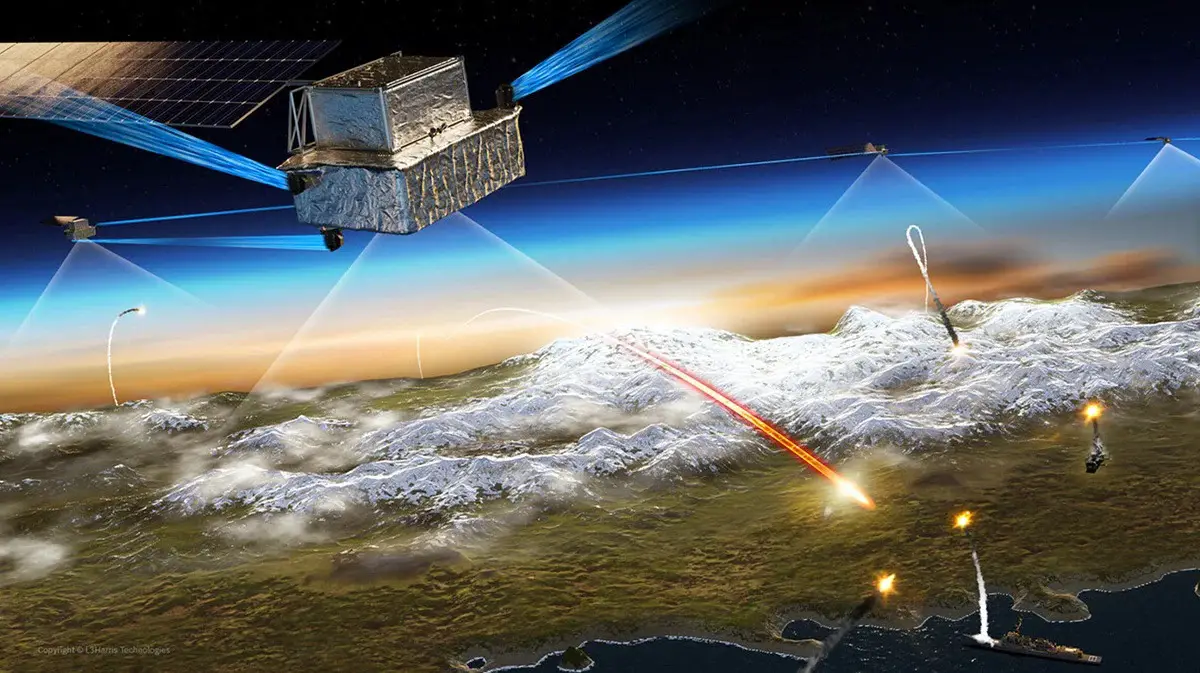L3Harris completed its Critical Design Review (CDR) and Production Readiness Review (PRR) for 16 missile tracking satellites that will be part of the Space Development Agency’s (SDA) Tranche 1 Tracking Layer (T1TRK) program. The CDR milestone demonstrates that L3Harris’ design will meet the mission requirements, while the PRR provides L3Harris with the SDA’s approval to begin the full production process. These major milestones move the program closer to achieving the SDA’s Proliferated Warfighter Space Architecture (PWSA) – a resilient, layered network of military satellites in low-Earth orbit. Hypersonic missiles are the most destabilizing kinetic weapons in our adversaries’ arsenals due to their dim flight profiles, varied launch points and high maneuverability. To deter their use and, when needed, to defeat them, the United States requires a resilient sensor platform to remove the veil from their flight paths.
The cornerstone of L3Harris’ Tranche 1 Tracking Layer (T1TRK) are infrared sensors and advanced algorithms that detect, track and fuse threat data which is provided real-time to the warfighter across a meshed network using both optical and RF communications. From the ground, the space vehicles can be commanded to a range of pointing modes that provide additional insight into threat tracks. The program includes supporting ground, operations and sustainment throughout its life. To meet launch schedule commitments, L3Harris started fabrication of critical sub-assemblies well before the CDR. With the CDR and PRR in the rearview, the team has successfully transitioned to the assembly and integration phase, coordinating closely with more than 20 major subcontractors and dozens of suppliers who provide critical parts for the satellites and the ground systems. It’s a challenge that L3Harris’ Director of Program Management Bob De Cort understands well. He’s leading the team that’s designing and developing 16 missile-tracking satellites for the program.

“L3Harris is working in lockstep with the SDA to get these critical capabilities on-orbit and into the hands of the nation’s warfighters as quickly as possible. The SDA takes a fundamentally fresh and different approach than traditional defense contracting. Rather than investing schedule and funds in single point solutions, the SDA acquisition plan breaks from tradition to use spiral development leveraging interoperable commercial technologies to deploy tranches of satellites every couple of years. The combined technology launch of SDA and MDA satellites will maximize warfighter immersion opportunities, allowing them to view the same test articles at the same time from the same orbit. We use the phrase ‘building on our heritage and leaving a legacy’ to summarize that we’re bringing the best technologies and lessons learned from Tranche 0 forward while investing to develop algorithms, software, cyber security solutions, facilities and testing processes that will provide enhanced resilient capabilities and put them on orbit even more quickly to prepare for future tranches,” De Cort said.
Aligning closely to De Cort’s often-repeated mantra of “iterate, integrate, repeat,” the L3Harris T1TRK team recently steered the project through the two crucial milestones. Slated for launch in 2025, the satellites feature advanced technology designed to counter the fastest most maneuverable hypersonic missiles. For De Cort, whose career spans more than three decades in the space domain, the T1TRK project is both a professional and personal mission. Both his son and son-in-law are Naval Officers – one of whom is currently on an Aegis Destroyer providing missile defense in the Eastern Mediterranean. De Cort views T1TRK as a critical, transitional step toward achieving the SDA’s vision for a PWSA. The journey began with Tranche 0, under which L3Harris developed four prototype wide field of view satellites for SDA and one prototype medium field of view satellite for the Missile Defense Agency. Those five satellites are ready to be hosted on the Missile Defense Agency’s launch in the near future.















